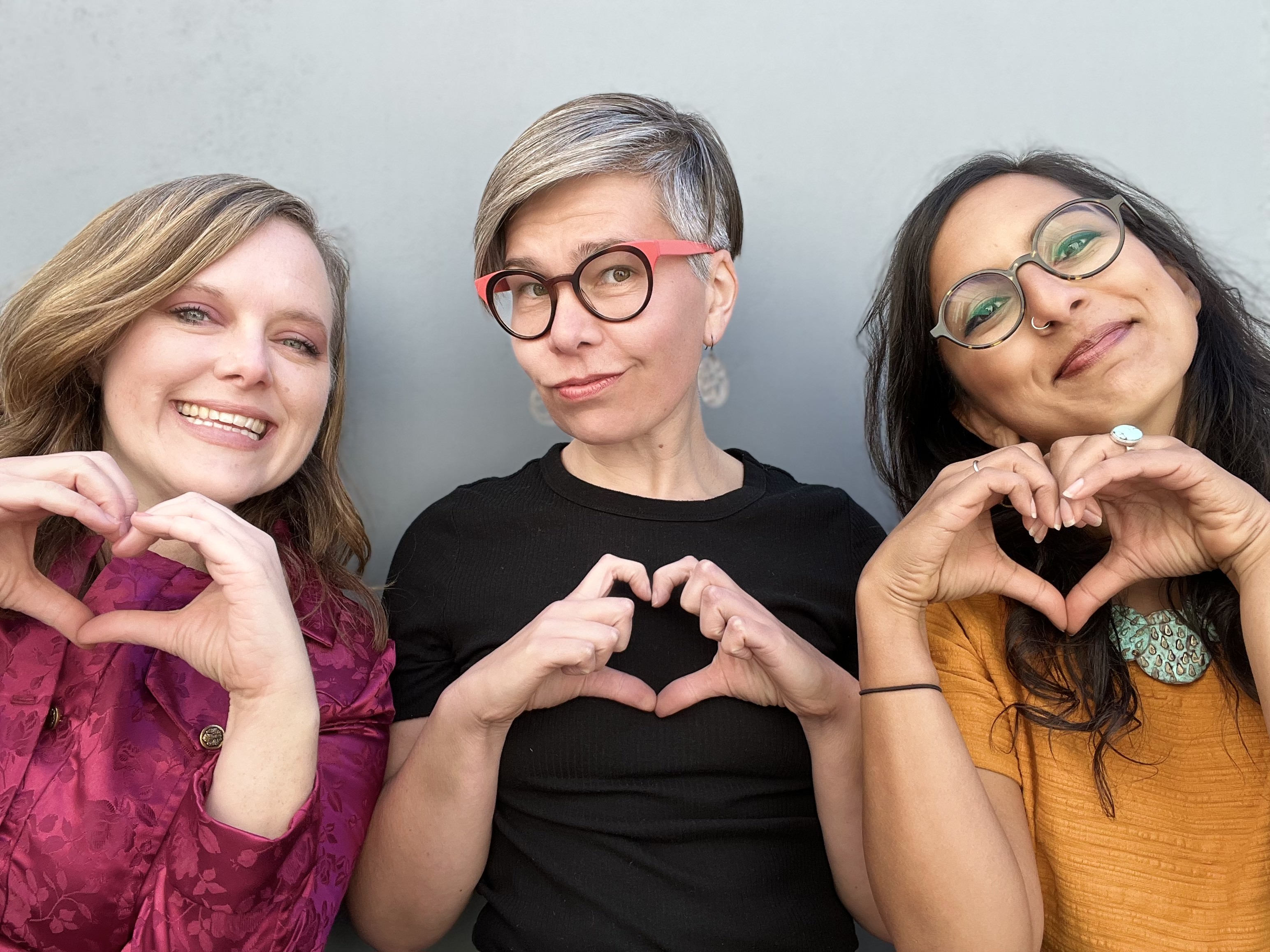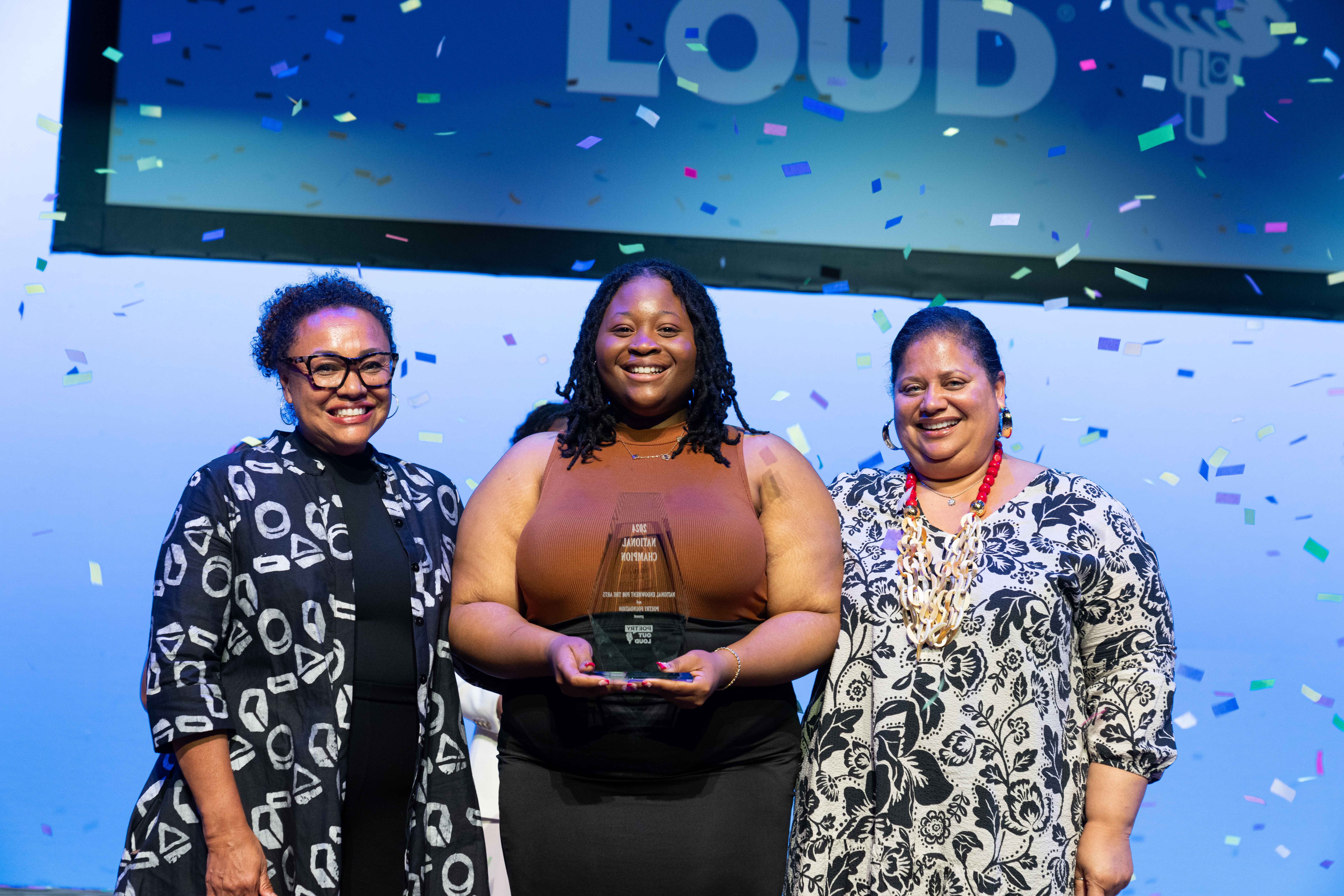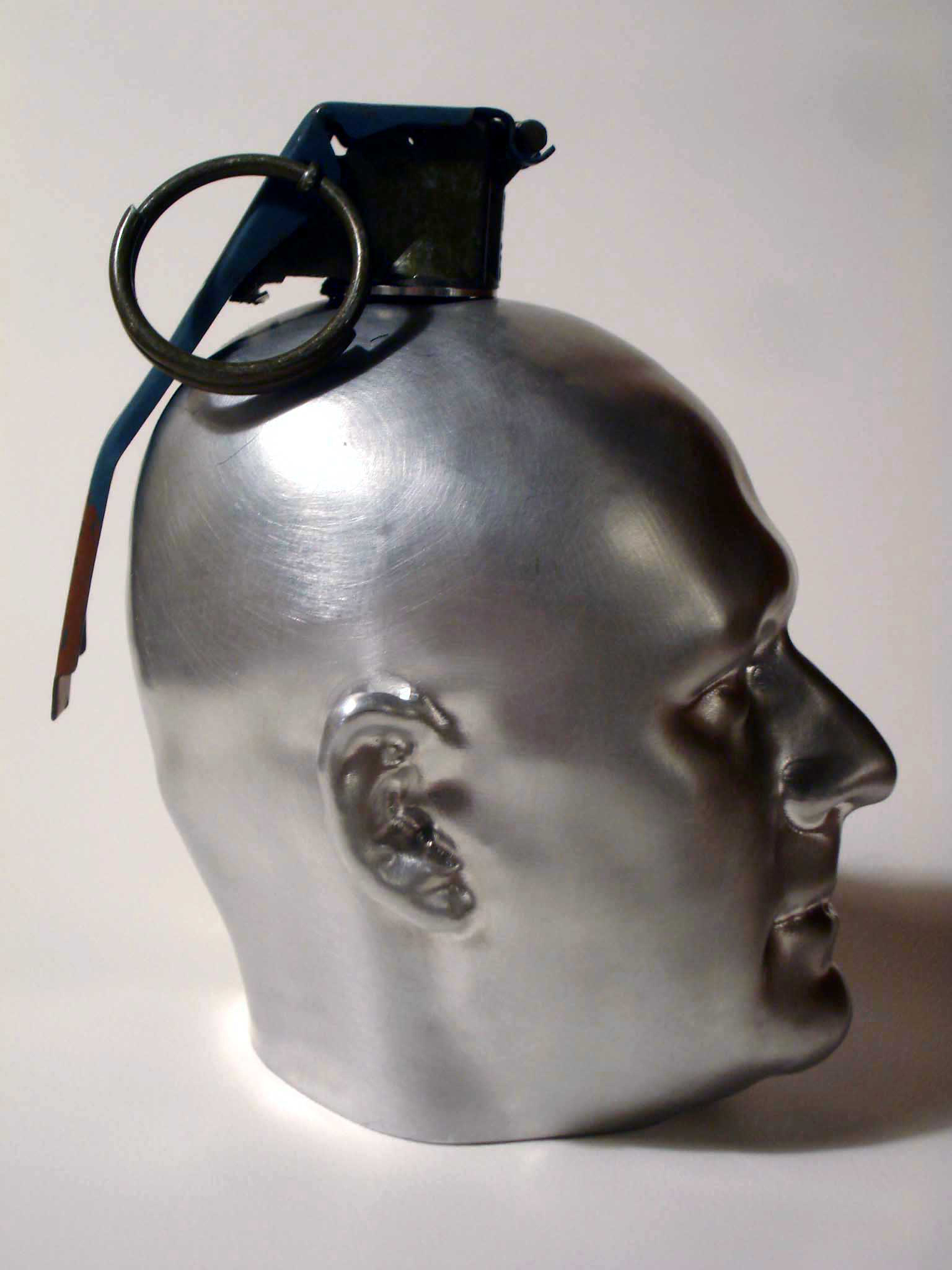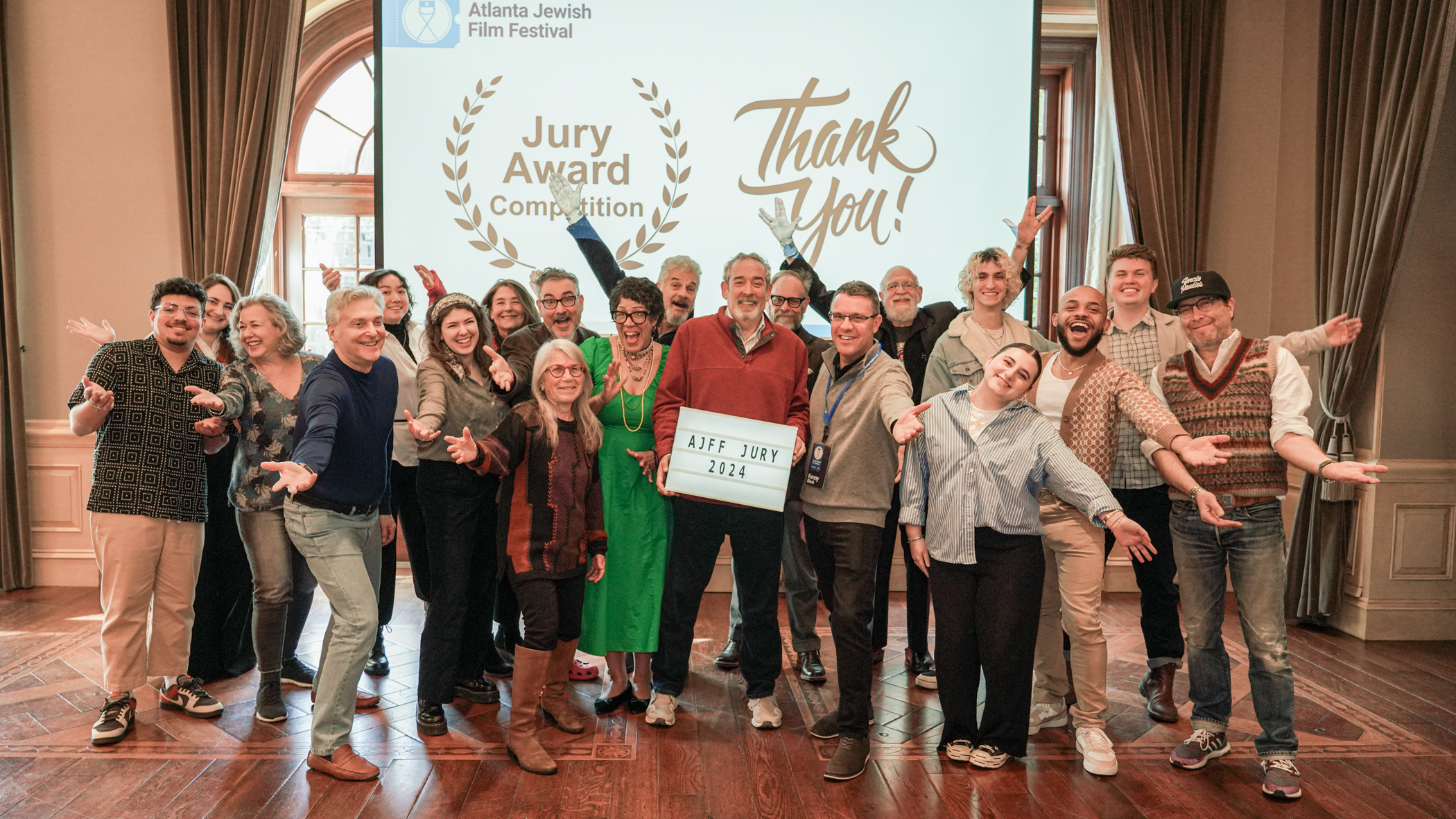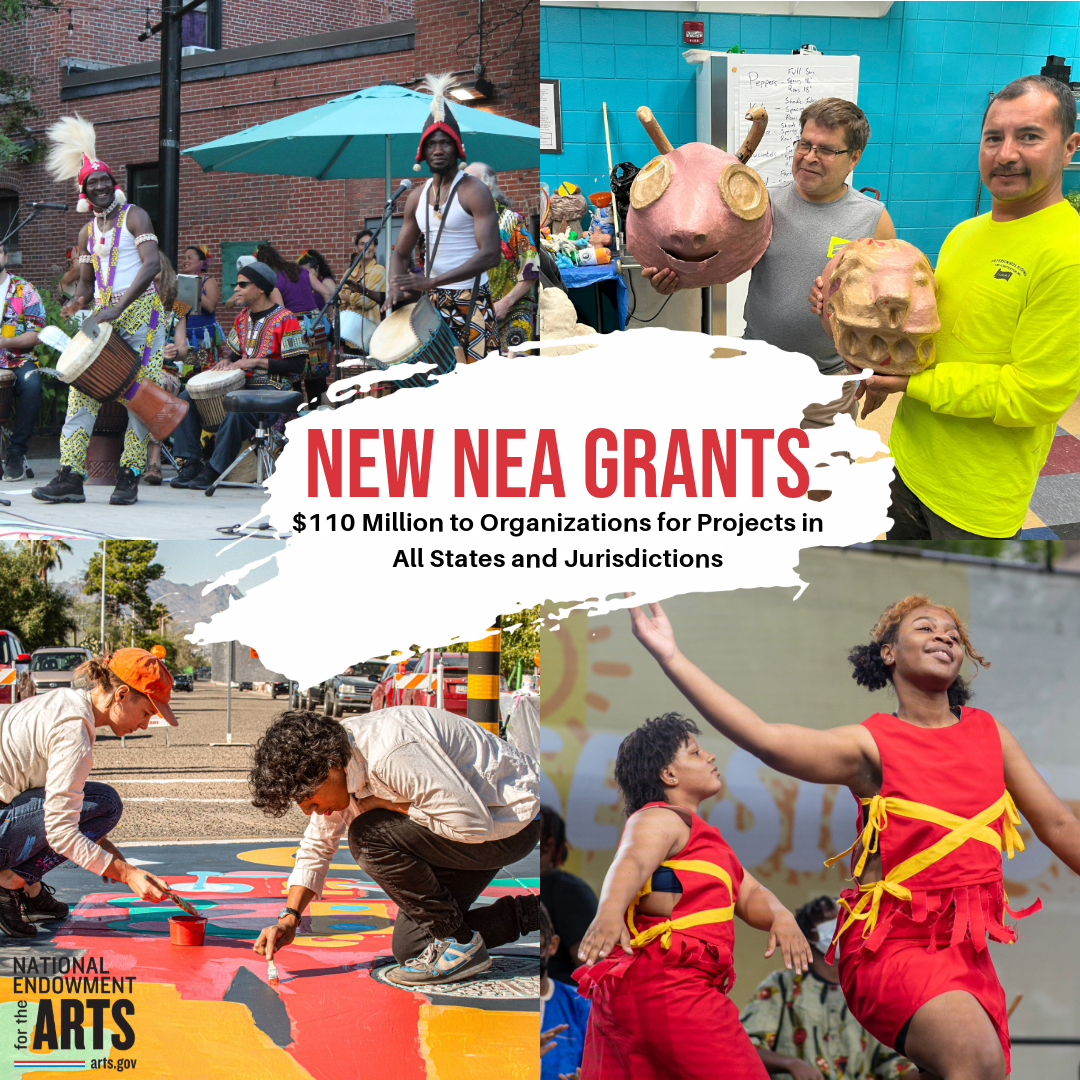Revisiting Lillian Faderman
Music Credit: “NY” composed and performed by Kosta T, from the cd Soul Sand, used courtesy of the Free Music Archive.
Jo Reed: From the National Endowment for the Arts, this is Art works, I’m Josephine Reed. We’re marking Jewish American Heritage month by revisiting a 2013 interview that I have long loved. It’s with Lillian Faderman, a scholar of lesbian and LGBT history and literature, as well as ethnic history and literature. But she spoke with me about her memoir My Mother's Wars which recounts her mother’s immigration to and life in the United States.
Lillian Faderman was the only child of a single mother who shared with her daughter all the facts of her life. Lillian knew all about the young girl who came to America in the early 20th century to go on the stage as a dancer. She knew about the grim reality of that American Dream: long hours sewing in stuffy factories and boarding with strangers. Her mother expected to work hard, but she didn't expect to fall in love with a man who wouldn't marry her even after she became pregnant. Even though Lillian knew all these facts, she never felt as though she really knew her mother. My Mother's Wars is Faderman's attempt to uncover the emotional truth of her mother's life. It's a reconstructed memoir in which Lillian Faderman goes beyond biographical facts and makes an imaginative leap into her mother's world. With striking authenticity and a keen sense of history, Lillian Faderman reflects on her mother’s life as a Jewish immigrant inhabiting the dance halls, factories, and picket lines, living through the growing hardships of the Great Depression, and the rising panic when her family in Latvia finds itself in the path of Nazism's expanding reach. The story is very much an immigrant story, and Lillian Faderman begins by recounting her mother's arrival in New York City.
Lillian Faderman: My mother came to America as a 17-year-old in 1914. She came by herself. She had a half-sister and a brother-in-law in New York. She had seen them only once. The half-sister was 20 years older and she had come in 1902 to say good-bye to the father that my mother and her half-sister shared. So, that was one very brief meeting and from that, she saw her again about 12 years later. So, she was virtually a stranger. My mother came to live with them in Brooklyn and to go to work in the garment industry just before World War I. It was certainly very traumatic, I think, for a 17-year-old to find herself in a new country with a language she didn’t speak, with a man and a woman she hardly knew.
Jo Reed: How did your mother acclimate herself to the United States?
Lillian Faderman: She very quickly made a friend in the factory where she worked who taught her about America, taught her to love American love songs, and American movies, and American dances, introduced her to the dancehalls on the Lower Eastside. And pretty soon, from what my mother told me, she started going out to dances every night, and coming home at one o’clock in the morning, and making her brother-in-law very unhappy, and she was kicked out of their home, went to live with her friend from the factory, and that’s how I open the book and then I pick it up again in 1932, many years later, 18 years later.
Jo Reed: Let’s go back a little bit. Your mother was born in a shtetl in Latvia.
Lillian Faderman: Yes, a shtetl called Praille. She had gone to school for about nine months, so she learned the Hebrew alphabet. She could read and write Yiddish, although not very well. She never really learned to read and write in the United States. So, she did speak English by the time I was born, but she was not functionally literate. She began by working in the garment industry in 1914 and that’s what she did for the next 40 years of her life until I was a teenager, until I was 14-years-old.
Jo Reed: Now, she was close to her family in Latvia. She didn’t leave because there was family dissention.
Lillian Faderman: No, she was very close to her family, particularly to a younger brother, a brother who was seven years younger than she was. And as I understood it from her, it was really customary for the oldest child to take care of the younger children. And so, the brother was sort of like her baby, and I think one of the hardest things for her about leaving her shtetl was leaving her brother, but she left for confused reasons. And I don’t think she ever really understood why she left. She had vague notions about being a dancer on the American stage because one of the girls that she worked with had a sister who came to America and got a job on the Yiddish stage. Maybe she thought her father wanted to send her away because even in the early decades of the 20th Century, anti-Semitism was rife in Latvia. Or, maybe it was because there were a number of daughters in the family and the father realized that it wouldn’t be so easy to get a dowry. So, I suggest all of these things in the book because she never knew for certain why she came to America. But once she came, I think that she wouldn’t have dreamt of going back because for the longest time she so enjoyed American culture--the movies and the love songs, and saw herself for a long, long time as not a serious person, until the 1930s. And then, I think she was forced to become a more serious person.
Jo Reed: As you said, she worked in the garment district, in the garment industry actually to be more precise. Describe the sweatshops that she worked in and the conditions and the hours.
Lillian Faderman: Presumably, by the 1930s, those places weren’t sweatshops anymore. The International Ladies’ Garment Workers Union had been formed and they tried to reform working conditions, but it didn’t always work that way especially during the depression because people were so desperate for a job. And my mother had made what she considered a decent salary in the 1920s and by the ‘30s, salaries were getting lower and lower. I describe one incident that she told me about of workers being locked out of a shop without any notice. Before 1935, there wasn’t even unemployment insurance and so, you never knew where your next meal was coming from if you lost a job. I described a strike that she participated in, which was not at all uncommon in the 1930s because working conditions had once again become as bad as they were at the beginning of the century when there were sweatshops. And I think my mother was very anxious to become part of the protest that workers in the garment trade had finally organized in large numbers in the 1930s to protest the resurgence of these terrible working conditions that she had first come into when she came to America in 1914. Things were almost as bad in the 1930s as they had been in 1914.
Jo Reed: She liked working with the union. As you write, there was a way in which she felt herself absolutely at home with that.
Lillian Faderman: Yeah, I think she was exhilarated to participate in those strikes. I think that finally she felt that she could be doing something, that she could respond to the injustices that she had to face daily as a worker in the garment industry. I describe one scene in particular that she had told me about where it was sort of a high for her; almost as high as being on the dance floor, she told me, to realize that workers were together and the strike grew by hundreds and hundreds, and finally she felt she was doing something as she hadn’t been able to before. Before, she felt powerless, just so desperate to find a job and keep it under almost any conditions. But finally, the workers fought back.
Jo Reed: Describe the living conditions. She was living in New York, in Brooklyn and the Bronx, as a single woman. What does that mean?
Lillian Faderman: She lived by a Missus, as it was called, which meant that she lived in a furnished room, in an apartment that was usually rented by a family. And to make some money, they would rent out a spare room. She had what was called kitchen privileges, which meant that she could cook if she wanted to, but that was always fraught with problems because she had to stay out of the way of the woman whose apartment it was. It was what she could afford at the time as a single woman. There was no way that she could afford an apartment on her own. And I think that was fairly common, certainly in the early decades of the 20th Century. But, as I describe in the book, the women who she had started working with in these shops, one-by-one got married and my mother, as she saw it, was not that lucky. And it really seemed to her that the only way out of the factory or the “shops” as she called it, was through marriage. There was nothing else for a single woman to do to escape what she saw as very difficult labor.
Jo Reed: Your mother also met a man who was the love of her life, but perhaps not the best choice for her. And his name was Moishe in the old country and Morris in the United States.
Lillian Faderman: Yes, yes. Their relationship began in 1932 and coincidentally, it began the same year that Hitler was elected to the presidency of the Reich. And I try to present two stories simultaneously in the book. One was her relationship with Moishe, who was eventually the person who became my father, though they never married. And the other story was Hitler’s rise and growing anti-Semitism in Germany and then Austria, and then it spread to the rest of Europe, particularly Eastern Europe and of course, my mother’s growing concern about her family who was left in Eastern Europe. She had a mother who was still alive at that time, and a brother, and two sisters. And so, I trace not only the relationship that she has with Moishe as it gets more and more complicated, but also her various attempts to bring the family to the United States. And one question that interested me so much when I began this research was what Americans knew about Hitler’s policy. And I found out that Americans knew a surprising amount about what was going on in Germany and then in the rest of Europe at that time.
Jo Reed: I thought that that texturing of the stories was really extraordinary, and I have to say, I don’t think I’ve read anything that gave me such a clear sense of the growing dread turning to panic that Jews, especially Jewish immigrants, experienced in the United States during that period. You chose to do this by having a short prelude to each chapter from The March of Time, but then we're also hearing about the letters that Mary is receiving from home. So, it really gives you such a very present sense of that dread.
Lillian Faderman: I actually call those a little quotations Time on the March, but you’re quite right because I’m really referring to a movie newsreel that was very popular during the 1930s called The March of Time. And what I wanted to do there, I got the quotations from numerous sources, various newspapers and magazines of the 1930s. But what I wanted to suggest was what people would have known had they gone to the movies and watched the newsreels, which was a major source of news for many people, or of course what they would have known if they had read the newspapers faithfully, either the English newspapers, or the Yiddish newspapers, or the magazines of the day. And as I discovered, they would have known quite a bit of what was going on and how endangered particularly Jews were in Europe during the 1930s.
Jo Reed: Moishe isn’t terribly concerned about this. Describe him. Tell us about him.
Lillian Faderman: Well, I actually saw the man who was my father only two times. And so, what I know about him I know from my mother and from research that I did, in order to write the book. But, he came to America with his family in 1921 at the age of 15. He was, as I discovered, my mother never told me this, but as I discovered, he was ten years younger than she was. He was educated. He’s gone to the gymnasium in Poland and had hopes of being an educated man in America. There was a significant class difference between the two of them. His family owned quite a bit of property in Poland, although, as I discovered, his mother was cheated out of the property. And so, they came to America with not much money at all, but I think that his parents had ambitions for him and he had ambitions himself to become a success in America. So, in socioeconomic terms, he and my mother were not a good match, but I think it was a very passionate relationship that lasted from 1932 until I was born in 1940. And although I only saw him twice, they did continue to see each other until we left New York in 1948. He was not concerned about bringing whatever family was left in Poland, partly I suppose because he didn’t believe how terrible things would get, but partly because he was a realist as he kept telling my mother, as she told me. There was no chance to bring relatives in this country unless you had a lot of money, or a lot of luck. There were lotteries. If you didn’t draw a number that was low enough, even if you had money, there was no possibility of coming into America. There was a strict quota. The quota was, as I discovered, based on 2% of those immigrants from that particular country who had been here in 1890. Well, my mother’s family, of course, was in Latvia and there were hardly any Latvians here in 1890. So, her possibilities were extremely slim.
Jo Reed: She was, though, racked with guilt about her family.
Lillian Faderman: Yes, and I think that that was what defined my mother most all through my childhood. I think she felt so guilty, even to the point of these psychotic episodes where she became obsessive compulsive because of course she didn’t know what happened to them. Hitler didn’t write letters saying, “I regret to inform you that we’ve killed your family.” So, she never knew what happened to them all those years when I was growing up. And so, her obsessions and compulsions would take the form of believing if she did a certain thing, it meant that her brother in particular was still alive and if she did something different, it meant that he was no longer alive. I think she never quite got over the terrible guilt for not having been able to rescue them.
Jo Reed: Your mother and Moishe reunited, but then he left again when she was pregnant and refused to give up the child, i.e. you.
Lillian Faderman: Yeah, right, yes. She had had two abortions in the course of their relationship at a time when abortions were illegal. And part of my research was to figure out what a woman would have done if she had to have an abortion in the 1930s, how she would have found a doctor and what that whole procedure would have been like. But he insisted on both abortions and also insisted that she have a third, but she refused to. She was already 43-years-old, although Moishe never knew that she was that old. And I think she realized that terrible things would happen to her family. That she would be alone, that she couldn’t depend on Moishe. And I think by then she was desperate to have a child. But, writing about this has been so wonderful for me because it made me understand, I think, for the first time, how heroic she was, how difficult it must have been to be already a woman in her 40s without a husband, without a man who would take care of her, to have a child out of wedlock as it was called in those days; the stigma that would be attached to it for her, the difficulty that she would have as a single mother raising a child and yet, her desperation for someone to love, her desperation for someone perhaps to carry on the family, knowing that it was hopeless, that her brother and her sisters would not survive as I think she knew by that time. It made her challenge Moishe. It made her say, “This baby I’m going to have.” I realized that I owe her awe and it took writing this book, I think, to come to that realization.
Jo Reed: And it also gave her a reconciliation of sorts with her other sister, Ray, who had come over some years earlier. And they had never been close and your mother feared telling Ray about the pregnancy, and that she was keeping the baby.
Jo Reed: And it also gave her a reconciliation of sorts with her other sister, Ray, who had come over some years earlier. And they had never been close and your mother feared telling Ray about the pregnancy, and that she was keeping the baby.
Lillian Faderman: Yes,
Jo Reed: And Ray, I think, surprised her.
Lillian Faderman: Yes, well, Ray’s first response was, “You’ll give it up for adoption. We’ll find a nice Jewish home for it.” But, Ray was there and she was there at the hospital when Mary had the baby, that is had me. And for years, Ray’s favorite story was to tell me that once I was born, the nurses brought me out to her and she held me in her arms, put me close to her heart and I never crawled out, she said. And it was a story that was just so lovely to hear growing up. I never doubted how much my aunt loved me. And so, it was all right to have these two women who I knew loved me so much, despite the fact that there was no father in my life during these days of Father Knows Best, during these days of the height of the nuclear family, but I had two people who loved me and that was the most important thing.
Jo Reed: Why tell this story now, and in this particular way?
Lillian Faderman: I think I came to the point where I felt that I really wanted to figure out who this woman who was my mother, who was she, and how did that fashion who I was? And I also wanted to figure out who was this man who helped make me, who was he? It seemed to me that at this point in my life, I really wanted to understand these things that I had never thought deeply enough about in the past. When I'd thought of my mother before, I loved her very much, but she seemed to me just this pathetic figure. And I thought that she was a negative role model for me. It always seemed to me that if I had any strengths at all, what I learned from her was what not to do, what not to emulate. But I really wanted to look at her more closely. She never really kept secrets from me, except for her age. She never told me how old she was. So I knew the facts of her life, but I felt that I didn't know her. And it suddenly felt that it was so important to figure out who this person was. And once having figured it out, I've come to see her as so heroic. And I never understood that before. I only understood that she was a woman who never succeeded in America, who never managed to do what you were supposed to do--fulfill the "American Dream." But I see that what she did was just she was a super woman. That she could have a child that she raised on her own. That she went to work every day, despite the fact that it was so difficult for her. We were on what was called "Relief" in New York for about six months. And after that she worked. And she supported us, even during these, what I saw as, psychotic episodes, her guilt over her brother and her sisters. Nevertheless, she got herself to work whenever she could. And it was so wonderful to be able to understand that about my mother. That she was not a victim. That in many ways, she was really heroic.
Jo Reed: You also insert yourself into the story at times, speaking to your mother directly in very short sentences, or to the reader, about the choices your mother made.
Lillian Faderman: Yes. I'm very much present in the book, in short sentences, as you say. But I wanted to share with the reader my reflections about my mother's choices. And sometimes they're angry reflections. At one point, I say, "Oh, Mama, Mama, Mama, how could you do this?" But at other points, they're reflections of awe. I really come to see and I want to share that with the reader, too, how heroic this single woman working in the garment industry, barely knowing the language, never being comfortable as an American, how heroic she was. And so every once in a while, I insert myself to express my awe towards her.
Jo Reed: You say in the afterword of the book that memories-- and I'm quoting you, "Memories of my mother and Aunt Rhea provided the emotional truth for this book." Can you talk about how you kind of put it together? How did you fill in narrative holes?
Lillian Faderman: Yes. I tried to use whatever I remembered from what they told me. But, of course, my mother never told me what color dress she wore the first time she went out with Moishe, or how it was cut, or whatever. That I had to imagine. But I think that memoirs generally do that sort of thing. What you could bring to memoir is emotional truth. You could bring the stories that you remember or things that you've been told. But to actually write memoir or to write a book like My Mother's Wars, you have to fill in the gaps with imagination. And so I did that from everything that I knew of her. I imagined what she might've dressed like the first time she went out on a date with Moishe. Or she had told me, for instance, that she met him in Crotona Park. I had to imagine what he looked like as he walked down the sidewalk in Crotona Park and sat on the bench where she sat. That, of course, is imagination. But what's not imagination is her telling me that's where they met. And her telling me about how immediately she was so struck by this man, how beautiful he was, how taken by him she was. And so I think, like all memoirists, what I do in this book, too, is a combination of emotional truth, the stories that my mother told me and that my aunt told me. And research and my imagination of what must've gone on.
Jo Reed: In your other books, have you done that as well, or is this the first time you're really embarking on creative non-fiction?
Lillian Faderman: My memoir is called Naked in the Promised Land, and that's how I operated in writing the memoir, too. Of course, I used every event that I thought was pertinent to where I wanted the book to go. I used the memories that I had. But you always--all memoirists have to fill in the blanks. Obviously, you don't remember word for word a conversation that went on 40 years ago. You remember the sense of it. You remember the emotional feeling behind it, and the specific words you have to supply through imagination.
Jo Reed: What was the process of writing this book like for you, Lillian?
Lillian Faderman: Sometimes it was painful. And sometimes it was exhilarating. When I wrote Naked in the Promised Land, although I write about sad incidents in my childhood and my adolescence, it didn't seem like it was a sad process for me. Because I knew it would turn out all right. I'm just fine. When I wrote My Mother's Wars, it was often very wrenching, because I had to feel the things that she went through, and they were very often not happy things. Although, as I said, she was ultimately so heroic, and to come to that conclusion was so healing for me, that was quite wonderful.
Jo Reed: Well, Lillian Faderman, thank you very, very much
Lillian Faderman: Thank you.
Jo Reed: We were revisiting my interview with scholar of lesbian and LGBT history and literature, as well as ethnic history and literature, Lillian Faderman. She was speaking about her memoir, My Mother’sWars. She’s the author of many books including Woman: The American History of an Idea and you can find out about them all on her website lillianfaderman.net. You’ve been listening Art Works, produced at the National Endowment for the Arts. Follow us wherever you get your podcasts…I’m Josephine Reed. Thanks for listening


